Fossil Falls, California
Fossil Falls!
A waterfall replete with fossils? A fossilized waterfall??
Glance around the area in 360 view
Right off Highway 395, heading to Owens Valley, lies the fossilized remains of an enormous river channel known as Fossil Falls. It is a sculpted stone waterfall gone dry. This was once a fluvial environment, dominated by water.
Notice the polished dark stones that create the canyon here. These are basaltic rocks formed from volcanic flows dating 440,000 to 10,000 years ago.
Basalt is a mafic rock. Mafic rocks have low silica content but are rich in magnesium and ferric iron, which give this landscape its dark hue. Basaltic lava flows are viscous. They ooze from a volcano and spread out along the surface. Looking closely, the rocks are full of holes! These are a product of trapped gasses within the lava. The gasses escape as the lava cools, leaving little popped bubbles known as vesicles. The rock here is known as vesicular basalt.
After the lava was deposited on the surface, it began to cool. As it cooled, it contracted which created the large polygonal shapes or columns seen on the surface. This is known as columnar jointing and is a common geological structure in igneous rocks.
So how was this vesicular basalt carved into the sculpture it is today?


The Sierra Nevada Mountains seen to the west, where the sun sets in the video, were glaciated during the last Ice Age. The period of maximum glaciation in the Sierra’s is known as the Tioga which occurred 20, 000 years ago. Glacial runoff would fill the Owens Valley Lake and River, which flowed over these lava deposits, weathering the rocks into the smooth sculpture that is Fossil Falls.
Photo:The Last Adventurer
Its a 70-80 foot drop from the top of the basalts to the bottom of the canyon, showing how deep and powerful these paleoriver systems were. An interesting waterfall erosional mechanism is at play here, called plunge pool erosion. As water falls over the edge, softer sediment at the base of the waterfall gets eroded out. This causes the falls to grow taller and migrate upstream!
Photo by: Girolle

Throughout the falls there are potholes in the rock, perfectly smooth bowls ranging in sized from penny sized to potholes you can crawl around in.
These are fluvial features formed through vortex-driven incision.
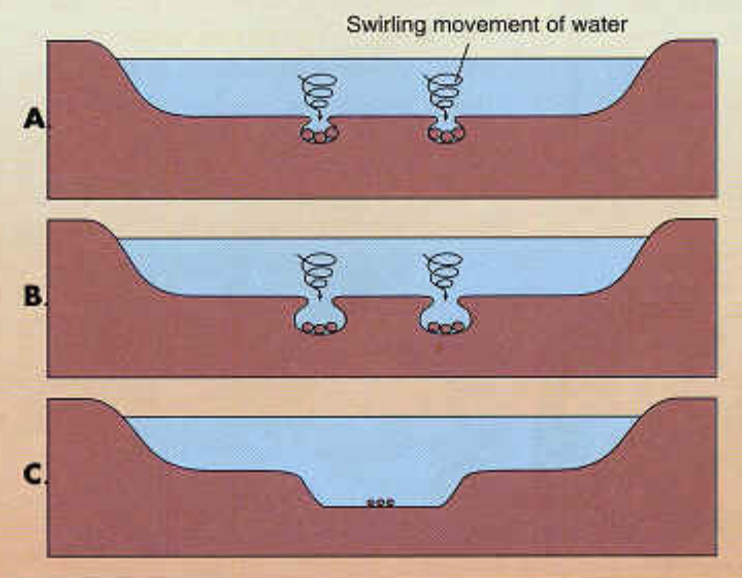

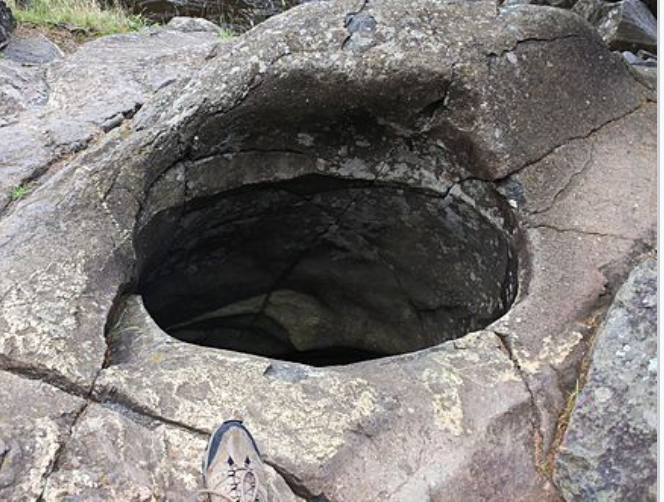
photo by: gerald koh
The water here could flow very fast, with enough potential energy to pick of and carry sediment in the water. Small rocks or pebbles swirled through the water drilling into the basalt, creating a cavity called a deflation hollow . The sides and depth of the hollow expand as an eddy forms in the hole, whirling the rock in a circular motion . This creates a vortex that makes it very difficult for the trapped stones to escape creating a hole drilling machine!
The area has rich historical significance as well! This area was occupied by Native peoples, such as the Coso People, who would live and hunt by the river here as early as 20,000 years ago. There are still traces left of them today! Petroglyphs can be found on the walls of the canyon.

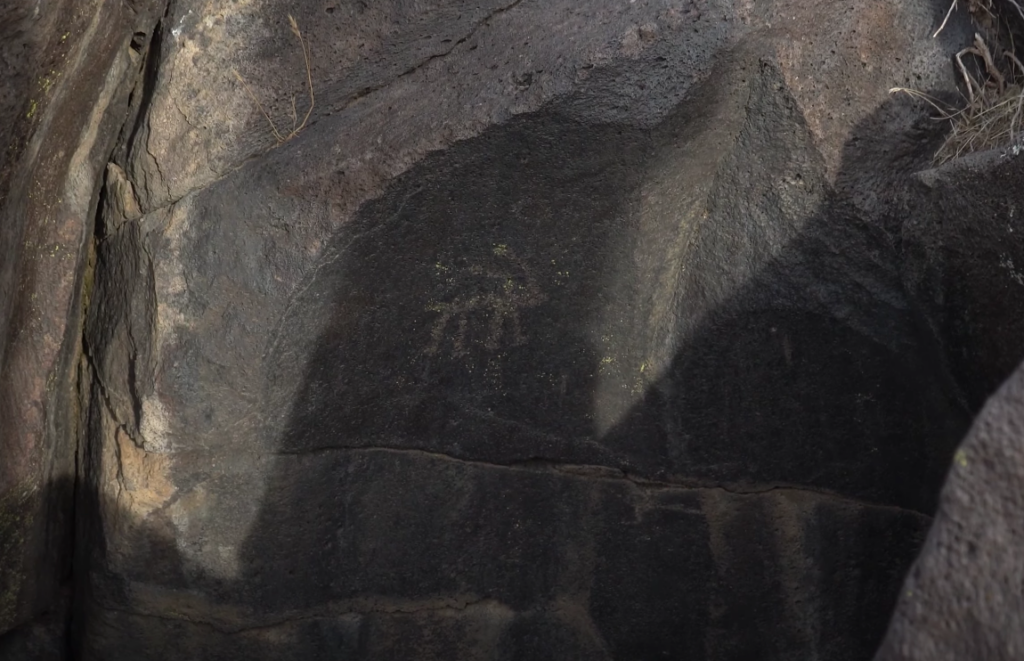
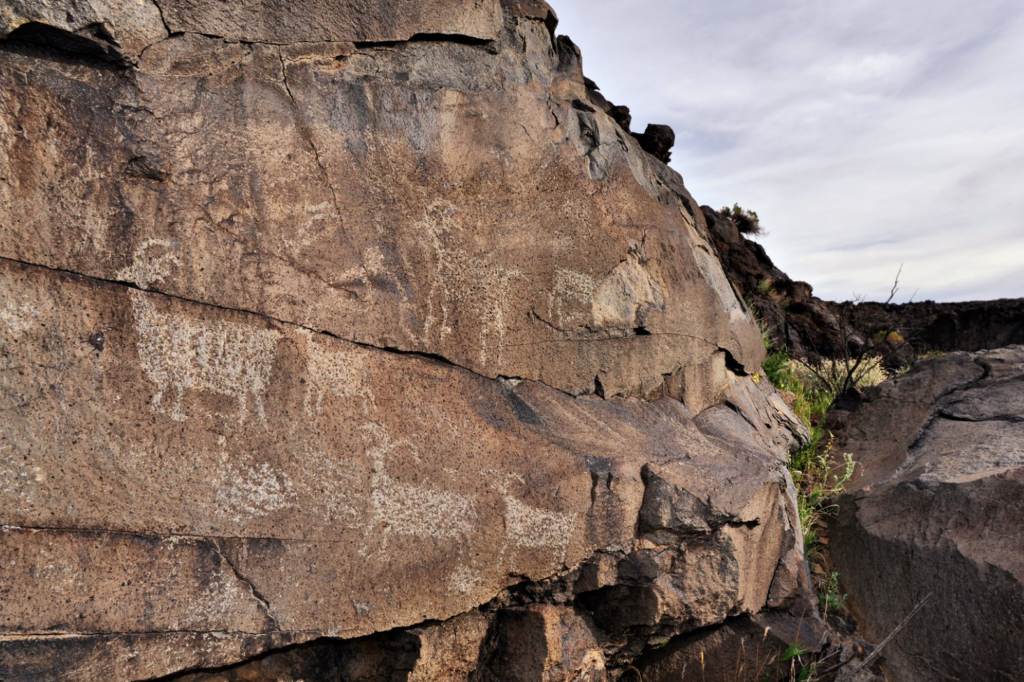
Native peoples would bring obsidian from nearby areas and build tools out of the stone. Obsidian is a black, felsic volcanic glass that lacks crystal structure. It forms when lava is extruded and cools very quickly. Obsidian conchoidally fractures which allows the rock to get very, very sharp, to a point of 30 Angstroms, 10x sharper than the average home razor used today!
In the video you can spot the little mound upstream of the waterfall? This is a…

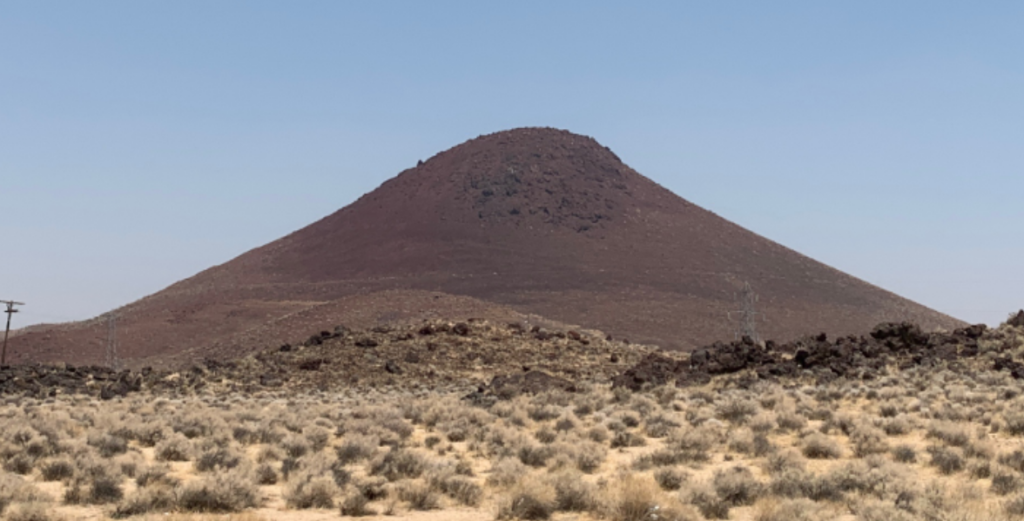
Photo:TTE
Red Hill is a cinder cone volcano is 630 feet tall and comprised of pumice and scoria.
Scoria are irregularly-shaped, highly vesicular fragments of lava that erupted and and land as solids on the ground. The pyroclastic material is usually ejected rather explosively, a common feature of highly gaseous lavas that create cinder cones.
Check out this website for incredible samples collected from Red Hill Volcano! Photography of Samples
Fossil Falls is place of imagination and beauty and the evidence of Earths changing landscape is crystallized into this landscape.
Author: BreeAnn Getman



